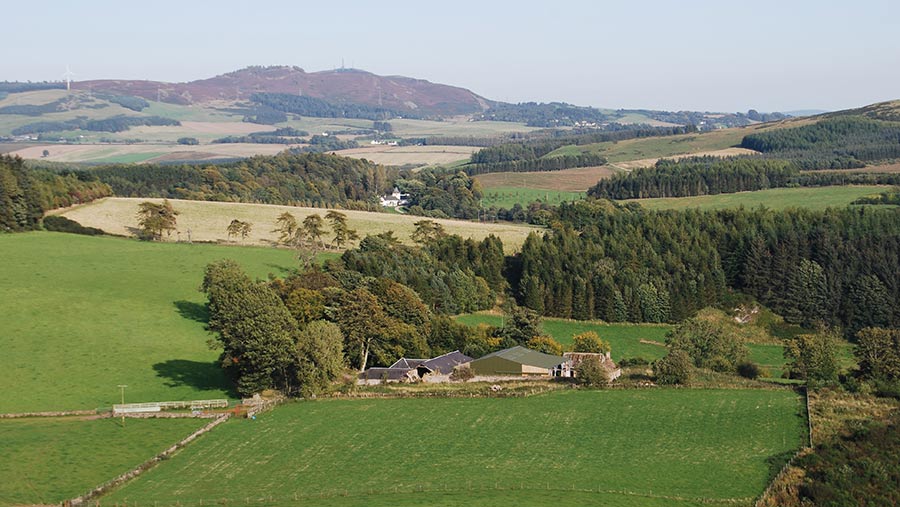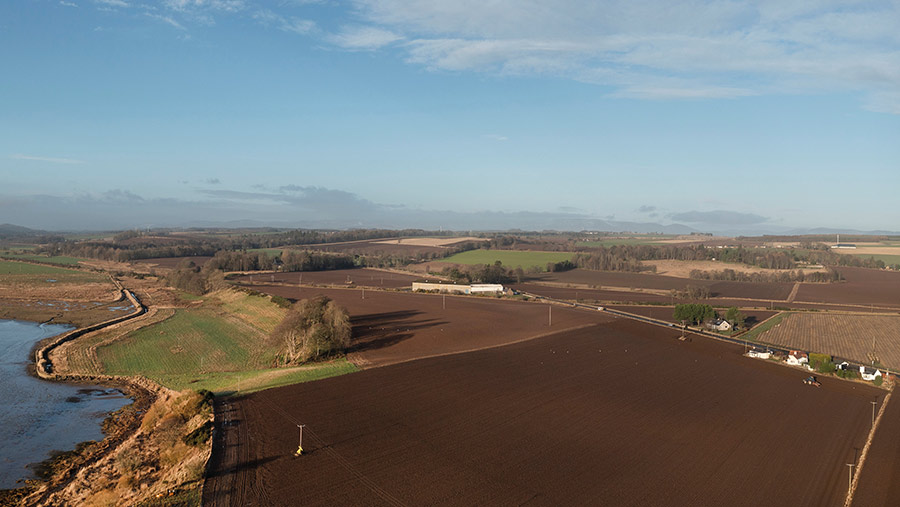Land in your area 2021: Scotland
The Scottish land market has seen demand continue to outweigh supply, leading to notable price rises.
The amount of land for sale on the open market in 2021 jumped up on the previous year in Scotland, but overall supply remained down on pre-pandemic levels.
Average values for both arable and pasture land climbed, with increases of 17% and 20% respectively.
See also: Land in your area 2021: Wales
Agents have reported the market is active, with a range of buyers including increased interest from farmers looking to expand, environmental buyers and commercial forestry purchasers.
There is also increased external interest in Scottish land, with the market share of buyers from outside of Scotland reaching new highs.
Hill ground values rise
The supply of land for sale was very limited during 2021. The number of acres brought to the market during the year was almost 40% lower than pre-Covid levels seen in 2019.
In most areas the value of arable and pasture has seen an increase as demand has outstripped supply.
However, hill ground and marginal arable and pasture land have seen the largest price rises over the past two years.
Although interest rates have risen recently, the cost of borrowing remains very low. In Scotland the potential to develop former farm buildings, whether for commercial or residential use, still remains an option in many cases.
Investment in land by those outwith the agricultural sector continues to underpin prices – notably the continued and surging interest in land for afforestation purposes, but also interest in land for amenity use and from those with natural capital interests.
The interest in land will also be shaped by Scotland’s future agricultural policy, which is being developed through the National Test Programme, following the same broad themes as the UK government – sustainable land use for food production while delivering biodiversity and combating climate change.
Duncan Barrie, partner, Galbraith
Varied buyer appeal
Demand for Scottish farmland across all sectors and acreages was buoyant throughout 2021, with a resulting increase in values – a trend we expect to continue this year.
Supply of farmland was 36% below the five-year pre-Covid average, leading to fierce competition from a diverse range of purchasers including expanding farming enterprises, lifestyle buyers and those with a forestry or environmental focus.
The number of farm buyers looking in Scotland was up 38% on 2020 and is now at unprecedented levels, with 40% of viewers coming from outside Scotland.
Scotland’s upland acres attracted significant interest for repurposing, including commercial forestry as well as carbon projects such as native woodland planting and peatland restoration.
Sale prices reflected this growing demand, pushing average land values upwards.
The diverse nature of the sector means assessing value is complex. It has never been more important to target the right potential buyers to achieve the best outcome.
Luke French, associate director, Savills
What sold well?

© Galbraith
Wester Keith, a 330-acre livestock farm in Angus, was sold by Galbraith for well in excess of its £1.62m asking price.
The holding included a one-bedroom cottage, planning permission for a three-bedroom house, a range of buildings, and a mixture of Grade 3 permanent pasture, hill ground, and woodland.
It was sold to an existing farmer who also has an agritourism business.
What’s coming to the market?

© Savills
Savills is bringing to the market Gilrivie, Tayock and Langley Park, a 330-acre holding in Montrose, Angus.
The arable unit comes with two houses and a cottage, and will be listed as a whole for offers above £3.75m.
